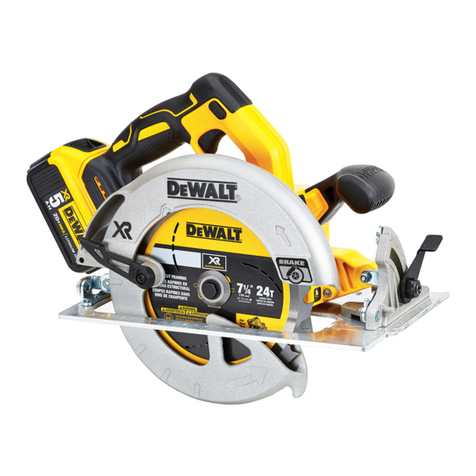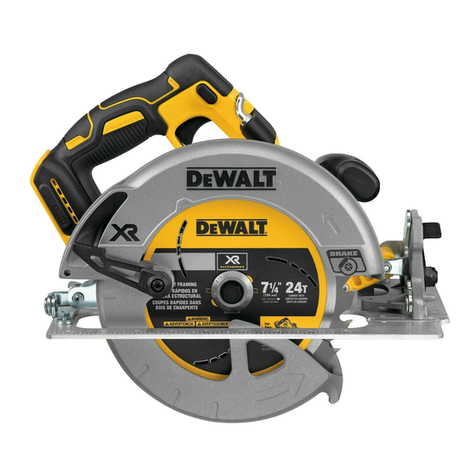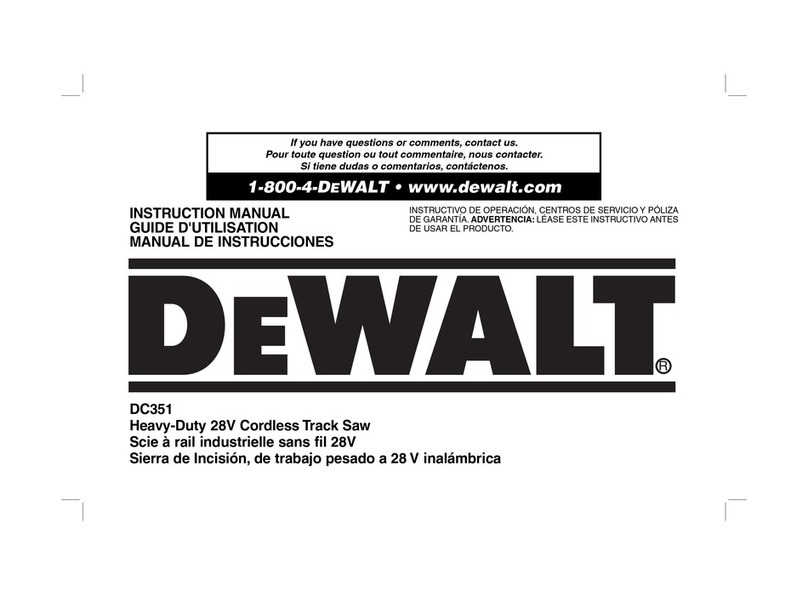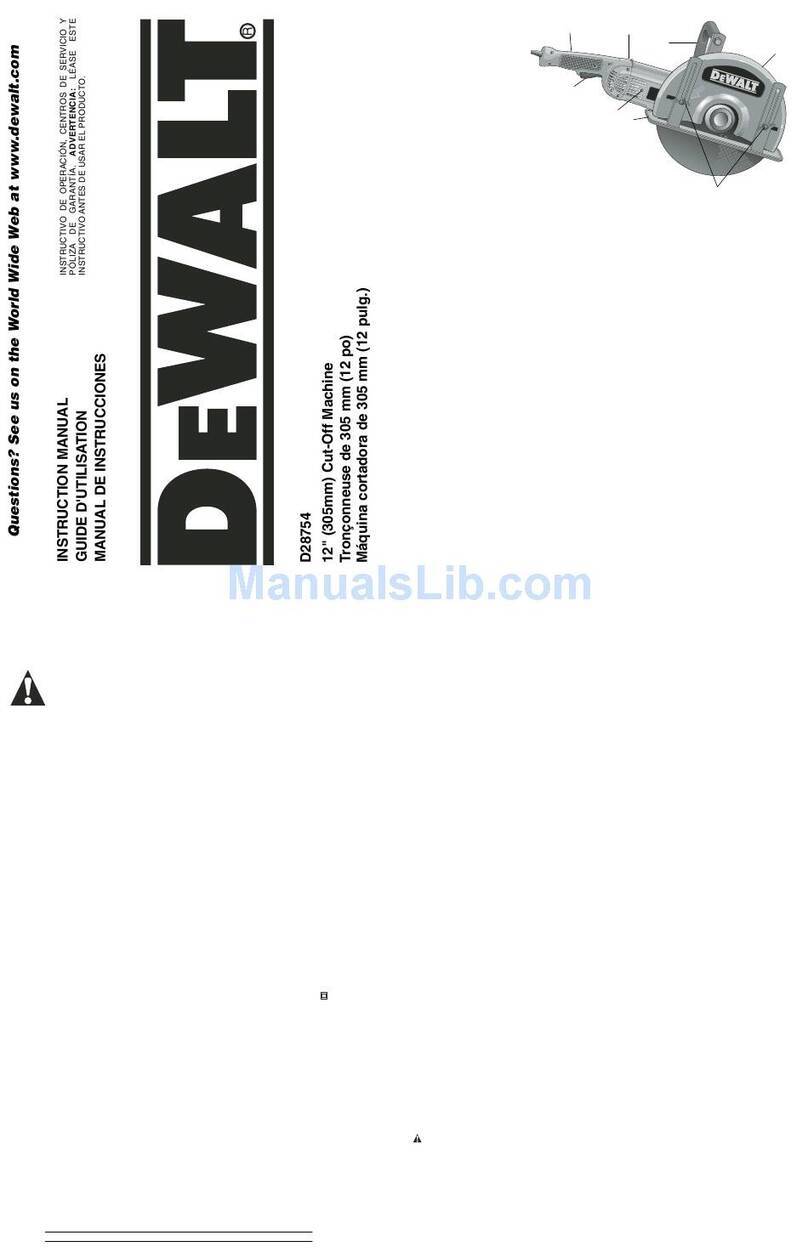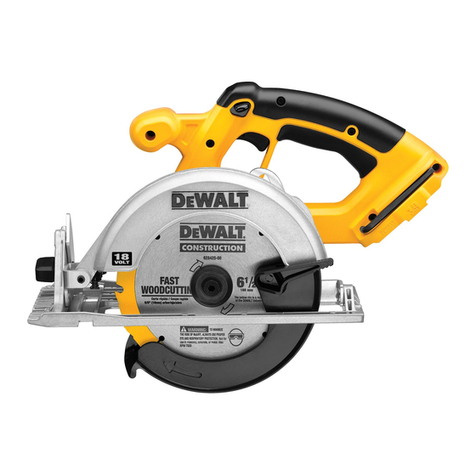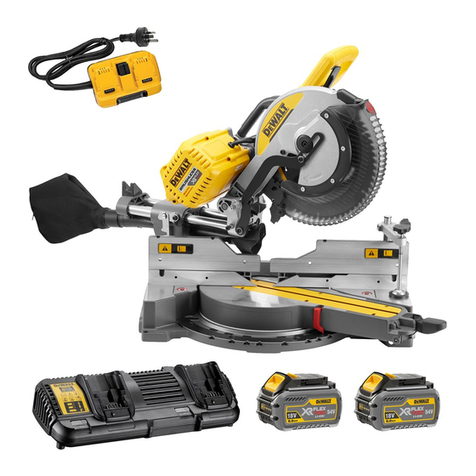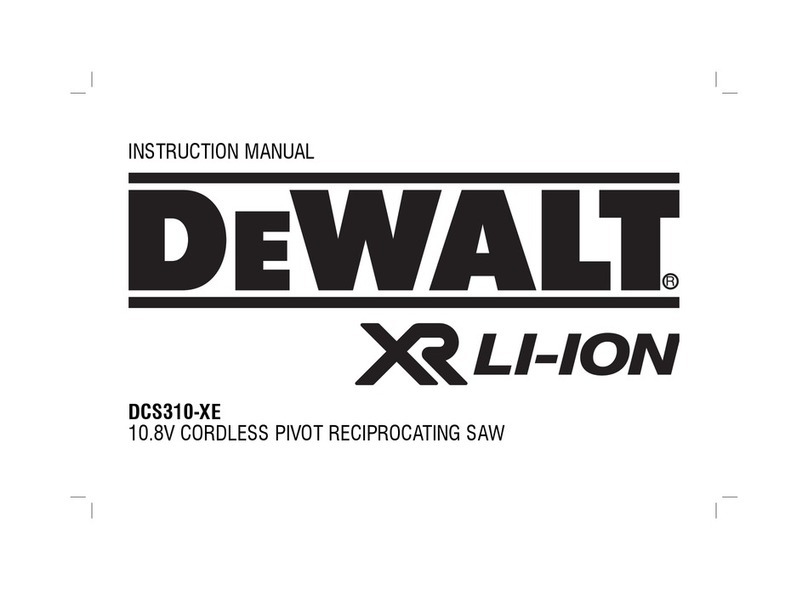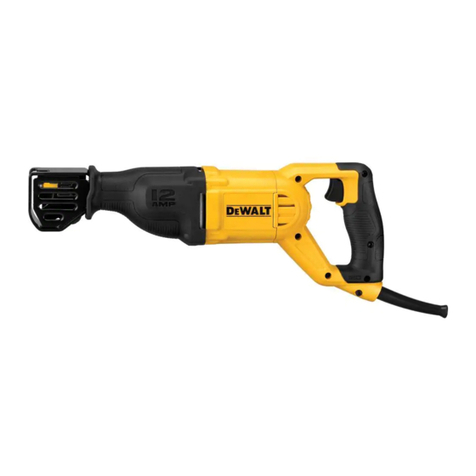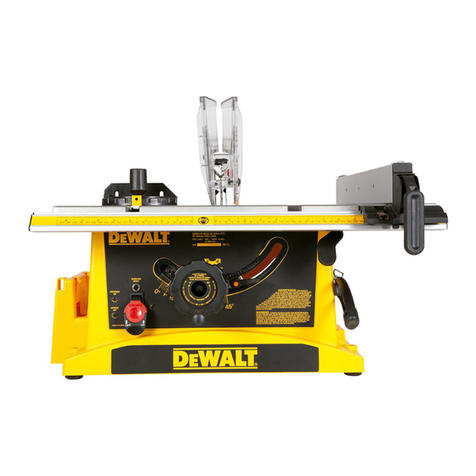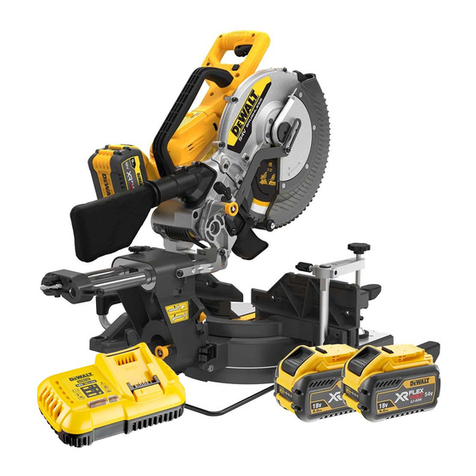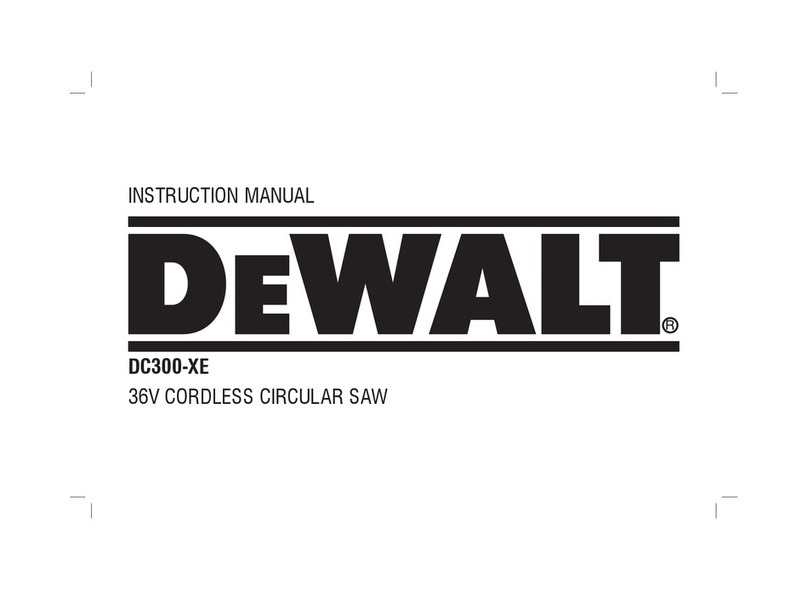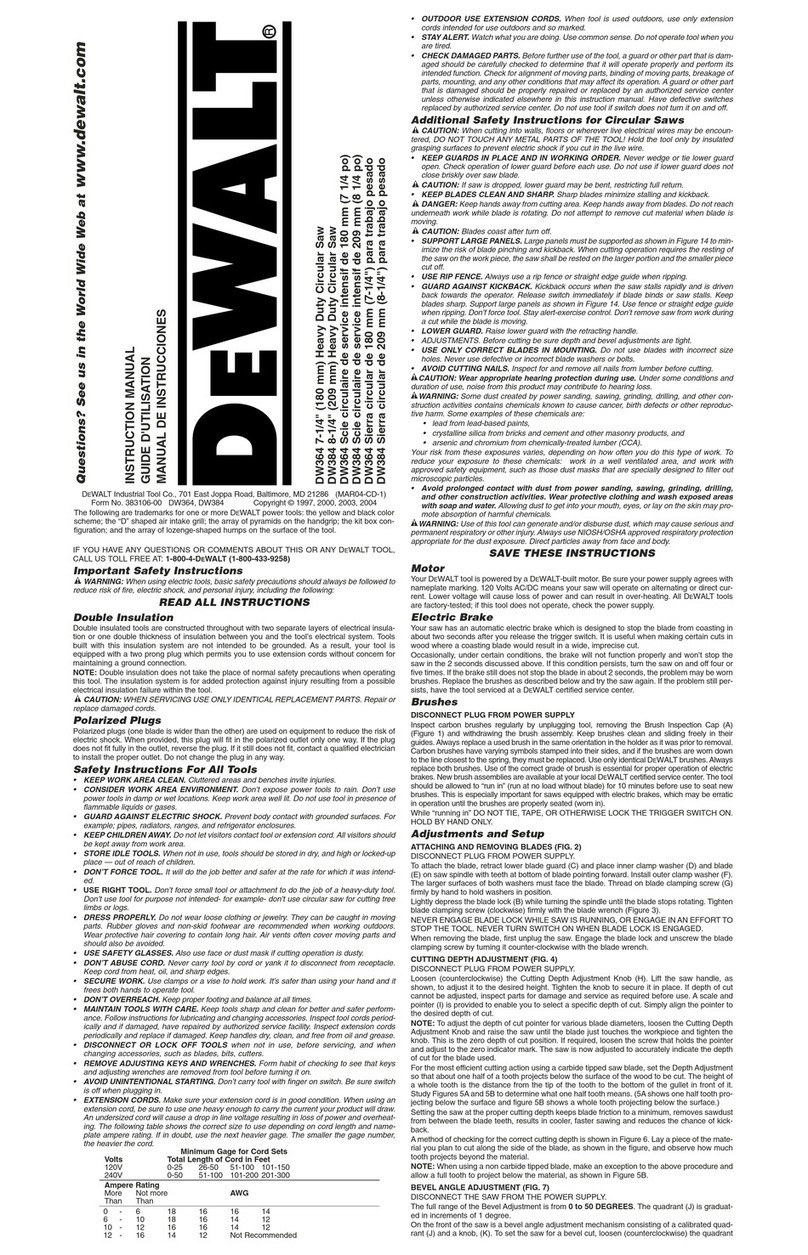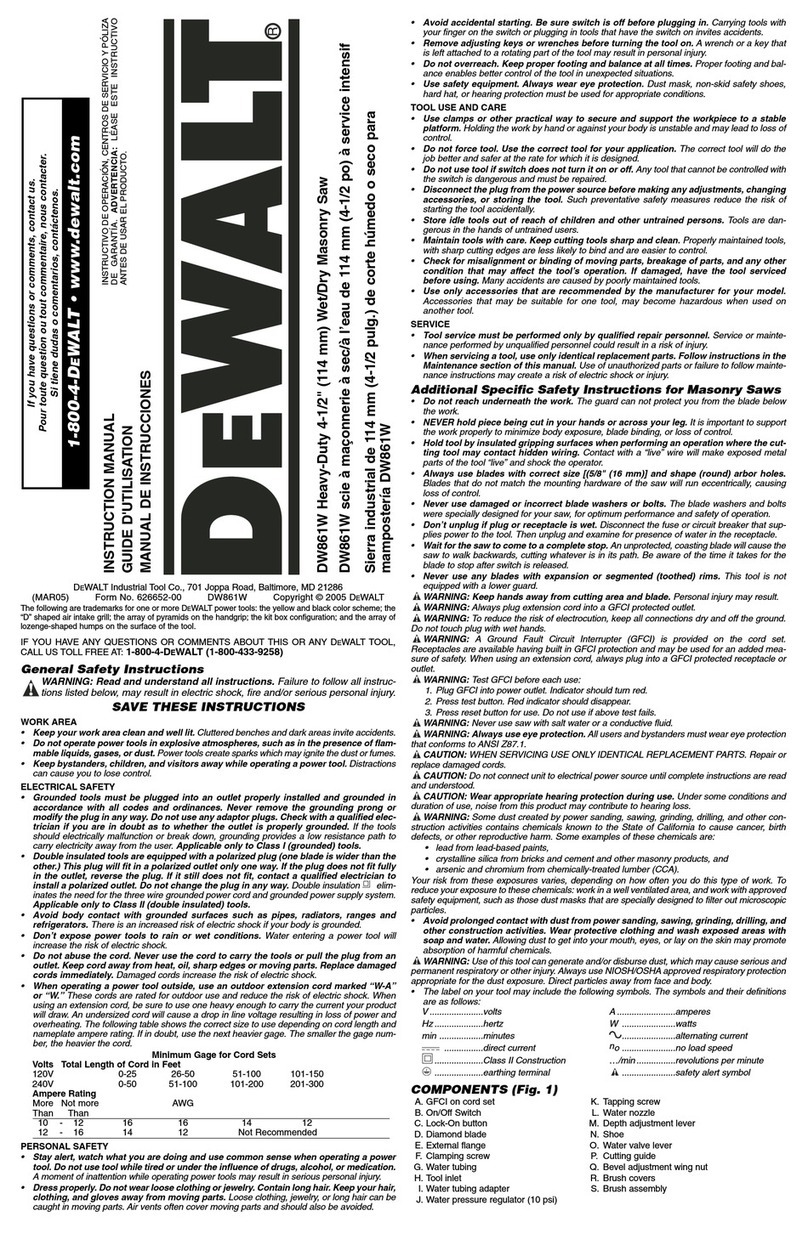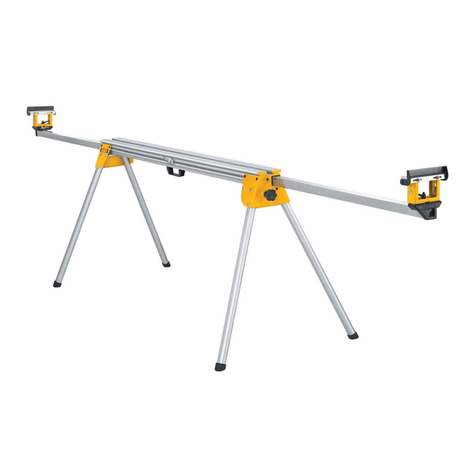• Support large panels to minimize the risk of blade pinching
and kickback. Large panels tend to sag under their own weight.
Support must be placed under the panel on both sides, near the
line of cut and near the edge of the panel.
•Do not use dull or damaged blade. Unsharpened or improperly
set blades produce narrow kerf causing excessive friction, blade
binding, and kickback.
• Blade depth and bevel adjusting locking levers must be tight
and secure before making cut. If blade adjustment shifts while
cutting, it may cause binding and KICKBACK.
• Use extra caution when making a “Pocket Cut” into existing
walls or other blind areas. The protruding blade may cut objects
that can cause kickback.
WARNING: Some dust created by power sanding, sawing, grind-
ing, drilling, and other construction activities contains chemicals
known to cause cancer, birth defects or other reproductive harm.
Some examples of these chemicals are:
• lead from lead-based paints,
• crystalline silica from bricks and cement and other masonry
products, and
• arsenic and chromium from chemically-treated lumber (CCA).
Your risk from these exposures varies, depending on how often you
do this type of work. To reduce your exposure to these chemicals:
work in a well ventilated area, and work with approved safety equip-
ment, such as those dust masks that are specially designed to filter
out microscopic particles.
•Avoid prolonged contact with dust from power sanding, saw-
ing, grinding, drilling, and other construction activities. Wear
protective clothing and wash exposed areas with soap and
water. Allowing dust to get into your mouth, eyes, or lay on the skin
may promote absorption of harmful chemicals.
WARNING: Use of this tool can generate and/or disburse dust,
which may cause serious and permanent respiratory or other injury.
Always use NIOSH/OSHA approved respiratory protection appropri-
ate for the dust exposure. Direct particles away from face and body.
4
English
WARNING: Always use eye protection. All users and bystanders
must wear eye protection that conforms to ANSI Z87.1.
CAUTION: Wear appropriate hearing protection during use.
Under some conditions and duration of use, noise from this product
may contribute to hearing loss.
CAUTION: When not in use, place tool on its side on a stable
surface where it will not cause a tripping or falling hazard. Some
tools with large battery packs will stand upright on the battery pack but
may be easily knocked over.
CAUTION: When sawing into walls, floors, or wherever “live” elec-
trical wires may be encountered, do not touch any metal parts of the
tool! Hold the saw only by its plastic handles to prevent electric shock
if you accidentally saw into a live wire.
• The label on your tool may include the following symbols. The sym-
bols and their definitions are as follows:
V..........volts A ............amperes
Hz........hertz W ..........watts
min ......minutes ..........alternating current
....direct current no ..........no load speed
........Class II Construction ..........earthing terminal
........safety alert symbol .../min ....revolutions per minute
Important Safety Instructions
for Battery Packs
Your tool uses either an 18 Volt DEWALT battery pack. When ordering
replacement battery packs, be sure to include catalog number and
voltage: Extended Run-Time battery packs deliver 25% more run-time
than standard battery packs.
NOTE: Your tool will accept either standard or Extended Run Time
battery packs. However, be sure to select proper voltage. Batteries
slowly lose their charge when they are not on the charger, the best
place to keep your battery is on the charger at all times.
